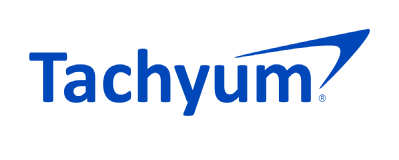Médiathèque / Communiqués de Presse / 2017 /
Tech Alert: U.S. Businesses Risk Falling Behind as Lead in Global Semiconductor Industry Threatened
· 4 minutes de lecture
CAMPBELL, Calif., April 5, 2017 – Processing performance improvements of computing components from Silicon Valley designers and manufacturers have hit a plateau, with the U.S. economy facing a major threat to its leadership in the $335B global semiconductor industry and the $1T market for high-tech products and services powered by these semiconductors.
Based on new proprietary computational mechanisms, created specifically to unlock the performance of nanometer-size devices, Tachyum will deliver solutions with unprecedented speed, power, and cost to solve the most complex problems in the cloud, big data, deep learning, mobile devices, autonomous systems, and large-scale computing. The impact of Tachyum products will be felt across a broad spectrum of applications and markets.
The U.S. generated nearly half of global semiconductor industry sales in 2015 with $166B. Thanks in large part to its rapid innovation, the U.S. semiconductor industry’s impact on U.S. GDP growth and employment has historically been more than seven times its share of U.S. GDP. In fact, IT using- and IT producing-industries are estimated to account for nearly all economic productivity growth in the U.S. economy from 2010-2020.
But now, experts and the press have sounded the alarm for an impending sea state change in the semiconductor industry. The heady days of Moore’s Law, which drove unprecedented innovation and staggering revenue growth in Silicon Valley for 50 years, with processing chips doubling performance every two years or so, now faces fundamental challenges. Because of physical limits, it is now harder to shrink circuits further.
Performance stagnation in U.S.-based semiconductor products is already enabling global competitors to catch up. Silicon Valley’s fast moving performance increases have slowed to a crawl - the doubling time for the number of transistors on a chip has increased to 30 months and continues to rise - thereby providing global competitors an unprecedented opportunity. Ten years ago, Silicon Valley companies had a 10X performance advantage. Today, that lead is down to 30 percent and continues to erode.
“In the U.S., performance improvements have plummeted, innovation cycles have grown longer and manufacturing costs have not decreased,” said Dr. Radoslav Danilak, co-founder and CEO at Tachyum. “Losing ground in semiconductors will devastate our ability to compete on the global stage. What does that mean to the trillions of dollars’ worth of consumer, commercial products and services that rely on high-performance chips? If we don’t innovate ourselves out of this performance plateau, we may see U.S. industries struggle to compete with commoditized products, where price is the only differentiator.”
China’s government has intelligently responded to this slowdown. With national focus and hundreds of billions of dollars in investments, they are committed to advancing their semiconductor industry while U.S. venture capital investment in semiconductors decreased 58 percent. In 2013, China launched the world’s fastest supercomputer, the Tiahne-2. In 2015, after the U.S. placed an embargo on Xeon processor exports to China, it motivated them to accelerate their internal development. Today, the world’s fastest supercomputer is China’s Sunway TiahuLight, which is comprised of 40,000 Chinese-designed processors; dropping the Tiahne-2 to No. 2. In third place is a U.S. supercomputer, which is 5x slower than TiahuLight.
To provide a better idea of how and why, one must consider device physics. The 10-nanometer transistors in use today are much faster than the wires that connect them. But virtually all major processing chips were designed when just the opposite was true: transistors were very slow compared to the wires that connected them. That design philosophy is now baked into the industry and it is why PCs have been stuck at 3-4GHz for a decade with “incremental model year improvements” becoming the norm. Expecting processing chips designed for slow transistors and fast wires to still be a competitive design when the wires are slow and the transistors are fast, doesn’t make sense.
Advanced research that requires supercomputers, drives progress in cancer research, weather forecasting, global warming modeling and national security. From IoT through laptops and cell phones, to artificial intelligence, in almost every human endeavor, high-performance processing chips have become the critical enabler and differentiator. Maybe there is still a way to exploit today’s device physics
Tachyum is unlocking the inherent performance of nanometer-size devices to deliver products that will change its $24B dollar target market. Tachyum is set to deliver increases of more than 10X in processing performance at fraction of the cost of any competing product. The company intends to release a major announcement within the next month or two.
Follow Tachyum
https://www.linkedin.com/company/tachyum
https://www.facebook.com/Tachyum
About Tachyum
Named for the Greek “tachy,” meaning speed, combined with “-um,” indicating an element, Tachyum emerged from stealth mode in 2017 dedicated to engineering disruptive intelligent information processing products. Tachyum’s founders have a track record of solving problems caused by device physics to deliver transformational products to market. The Campbell, Calif.-based company received seed funding in 2016.

